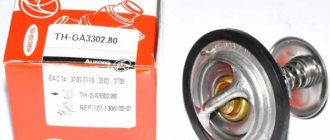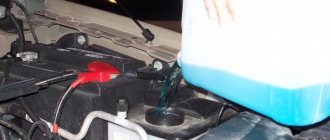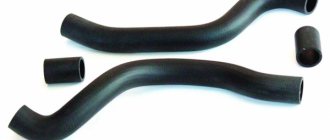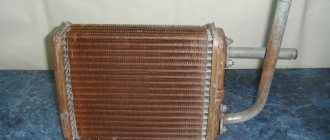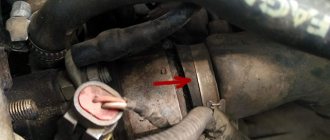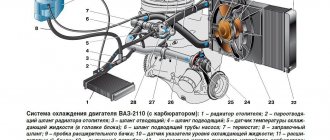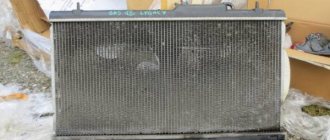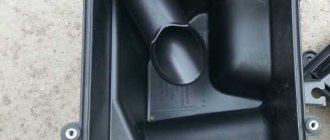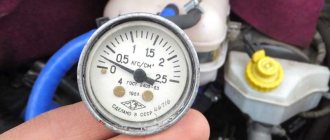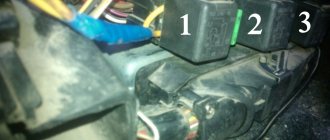Every car has a cooling system, which is extremely important. To prevent the engine temperature from rising above the permitted level, the cooling system removes it. Every car owner knows that a significant increase in temperature will certainly lead to engine failure, which will need major repairs. We invite you to understand what exactly it is, what it actually consists of and what features the so-called cooling system on the domestic popular UAZ Patriot, which, as you know, is installed on, has a good 409 engine.
How cooling works and works on Patriot
In any modern car, there is a full-fledged separate unit consisting of components. This is the cooling system. On the off-road UAZ Patriot, the designated system contains the following elements, we list them:
- Radiator (main element);
- An expansion tank is required;
- Several hoses;
- Water pump;
- Tubes;
- Thermostat;
- Fan;
- Special coolant.
Modern UAZs, developed taking into account the environmental standard generally accepted in most countries of the world, EURO 3 and 4, are equipped with cooling motor systems of the so-called closed type. They work directly due to the constant circulation of antifreeze or antifreeze. It is precisely the liquid in the system that is the main reagent, which, with the help of other elements, ensures the removal of high heat from the UAZ Patriot power unit.
In addition to what is indicated, the cooling system includes an electric pump that supplies fluid to the heaters. A UAZ Patriot with the 3rd European standard is equipped with one radiator, and a car with the 4th European standard already has 2 radiators.
We invite you to familiarize yourself with the diagram of the complete design of the cooling system. The diagram below shows the entire list of elements involved in the operation of the system.
The diagram clearly shows not only all the working elements in the system, but also how the fluid flows through the entire system. Thanks to the above diagram, you can imagine how the system is structured and how it functions. Next, let's look at how the system actually works:
- There is a certain pressure in the system because it is closed. The pump plays a major role in creating the required pressure.
- The pump operates due to the torque emanating from the shaft of the power unit.
- A pump, of course, directs the liquid into a specially designed compartment. It is there that the heat transfer occurs, which the 409 engine gives directly to the specialized coolant itself.
- From the heat transfer compartment, the liquid is directed directly to the thermostat, which takes part in the complete distribution of the specially designed liquid flows - hot and cold, respectively. When the liquid is at a very high temperature, the device directs it to the radiator for timely cooling. But only cold liquid is sent to the water pump.
This is exactly how the cooling system of the UAZ power unit works, and in most other modern cars. The above diagram is also appropriate for a number of other machines.
When it is necessary to increase the air temperature in the interior of the UAZ Patriot, the driver independently activates the heater switch. At this moment, liquid access to the heater radiators opens. Immediately the pump begins to actively pump up pressure, accelerating the circulation of cooling liquid throughout all system radiators. In general, it’s not difficult to understand the scheme and you can independently understand how and what is involved in the process.
UAZ Patriot with the 3rd European standard is filled with antifreeze A60M or a slightly different A40M. Newer cars can be filled not only with antifreeze, but also with antifreeze. In the process of heat removal, so to speak, there is no fundamental difference in these liquids at all.
Scheme and principle of operation
After starting a cold engine, the pump installed on the cylinder block starts working. A belt drive is used to transmit torque; the radiator fan (located in the engine compartment) does not work.
Since the thermostat valve is closed, antifreeze from the pump is directed into the engine jacket in a “small circle”. Part of the coolant is diverted into the interior heater circuits by an electric pump, which accelerates heat exchange and increases the efficiency of the air conditioning system.
As the temperature of the antifreeze rises, the thermostat valve located on the head of the block begins to open. Part of the heated liquid goes into the radiator, which allows it to begin circulating in a “large circle”.
As the temperature rises, the valve opens completely; when a critical value is reached, the viscous coupling and fan turn on. The created air flow passes through the heat exchanger honeycombs, reducing the temperature of the liquid.
On the front of the radiator there is an additional electrically driven fan, which is turned on by a signal from the temperature sensor. Information from the sensor is read by the engine control controller, which issues commands to turn the electric fan on and off and adjusts the composition of the fuel mixture depending on the fluid temperature.
An additional impeller is designed to cool the engine when driving off-road or at elevated ambient temperatures.
Since antifreeze expands when heated, a compensation tank is provided in the design of the cooling circuit. On the side of the tank there are notches for minimum and maximum levels, which allow you to control the amount of liquid in the UAZ Patriot cooling system. It is not allowed to operate a vehicle with an increased or decreased level of antifreeze in the cooling system. The recommended level should be 30-40 mm above the minimum cutoff (checked with a cold power unit).
Fan in UAZ Patriot in the cooling system
Checking the kingpins of the UAZ Patriot
The UAZ Patriot 2012 stove does not heat well
A device such as a radiator, as you all know, is a specialized container in which liquid is cooled. However, it is unlikely that the liquid could cool if such an essential element as a fan were missing. Any cooling system, including the one we are considering, cannot do without a fan, which increases the intensity of the decrease in the temperature of the liquid itself inside the radiator. Someone may not know, but in Patriots, which often have a 409 engine installed, the existing fan in the designated system is started from a viscous coupling using a conventional belt drive. This type of device is a classic hydraulic one, because it is controlled by fluid in a specialized fluid coupling. Car owners know that such a fan has many disadvantages, and they often re-equip the engine, and in particular, replace the viscous coupling with a better electric fan. What factors can we attribute to the disadvantages of a hydraulic fan in the system design:
- If necessary, you will not be able to turn on the fan.
- The fan operates unstably, because the rotation speed of its blades generally depends on the number of revolutions coming from the crankshaft.
- The load on the car's power unit increases because, as already mentioned, the clutch operates at the expense of the crankshaft.
Consequently, quite often, car owners install electric fans on their UAZ Patriot, which are now very popular.
Sadly, modern domestically produced SUVs are equipped with cooling system fans powered by a viscous coupling. This very viscous coupling has its drawbacks, including the high cost of the product, because it is a full-fledged unit.
Purpose and installation of power regulators in a car
| Remember how unpleasant it is when the heated seats, windows or cooling fan in a car fails. All this electrics can last much longer if you take care in advance and install special regulators. |
Let's sum it up
In the end, I would like to note that the cooling system of every car, without exception, is extremely important for it, and it makes no difference whether it is a gasoline engine, like a 409 engine, or a diesel unit. Each motor will always need to remove high temperature so that the “heart” of the machine does not jam. It is for this reason that all car owners, including the UAZ Patriot, must actively monitor the proper operation of the unit so that no failures occur. Otherwise, when the temperature rises to more than 100 degrees, the engine stops untimely, and this is fatal for it, and for the driver too.
Engine Specifications
The ZMZ 409 engine, among other changes, received a number of modifications, namely a different shaped valve cover, an improved gas distribution mechanism and a new metal gasket. Also, the volume increased, which entailed the modernization of the cooling system.
Before considering the description and design of the motor, it is worth deciding on the technical characteristics of the 409:
| Name | Characteristic |
| Type | Row |
| Fuel | Petrol |
| Injection system | Injector |
| Volume | 2.7 liters (2693 cc) |
| Power | 128 horsepower |
| Number of cylinders | 4 |
| Number of valves | 16 |
| Cylinder diameter | 95.5 mm |
| Consumption | 13.2 liters per 100 km |
| Environmental standard | Euro-2, Euro-3, Euro-4 |
| Cooling system | Liquid, forced |
| Cylinder operating order | 1-3-4-2 |
The procedure for replacing fluid on a UAZ
Important! All work is carried out with a cold engine.
To drain the antifreeze yourself, you will need a rag, keys and a 10-liter container. The procedure itself is quite easy and does not take much time:
- It is necessary to place the car on a flat surface;
- Remove the crankcase protection;
- Open the heater tap;
- Place the prepared container for old antifreeze under the radiator;
- Remove the plug from the expansion tank;
- Unscrew the UAZ radiator drain plug;
- Wait until the liquid is completely drained;
- Move the container with used antifreeze under the cylinder block;
- Unscrew the drain plug;
- Drain off any remaining liquid;
- Screw all the plugs into place
If desired, you can flush the Patriot Euro 3 cooling system with running water. To do this, you need to fill the system with it and start the UAZ engine for a couple of minutes, then drain the water according to the scheme described above. When filling the cooling system, you should pay attention to some specifics of this process. Taking into account the peculiarities of removing air from the heater and hoses, the plant established the need to repeat 3 cycles, each of which includes: • heating the engine • cooling • adding fluid The heater must be turned on.
Important! It is highly not recommended to use ordinary water as a coolant. However, in case of emergency, for example, a hole in the radiator on the road, you can fill it with water (preferably distilled) and drive 3 - 4 kilometers. It will not harm the car.
Replacing the radiator on a UAZ Patriot
Necessary tools: wrenches 10, 12, 14. Flat screwdriver, rag (it’s better to prepare it in advance so you don’t have to run around with dirty hands later). The radiator grille remains in place and does not need to be removed.
So, the sequence of actions:
- Disconnect the negative terminal of the radiator;
- Drain the antifreeze from the cooling system;
- Unscrew the 4 fastening bolts and remove the top shield;
- Similarly, remove the right shield and the left (3 shields in total);
- Disconnect the wires from the overheating sensor and disconnect the electric fan wire block;
- Remove the hose from the radiator pipe;
- Remove the steam exhaust hose;
- Remove the outlet hose;
- Unscrew the nuts from the radiator mounting rods. They are located on both sides;
- Unscrew the bolts securing the radiator to the frame, having first removed the wire clamps from them. These bolts are located at the bottom of the radiator and pass through the rubber pads;
- Before removing the radiator, make sure that you have disconnected everything from it;
- Remove the radiator without disconnecting the electric fan;
- Disconnect the electric fan;
- Clean the radiator from dirt and rinse it with water. Inspect it for cracks; if there are any, the radiator needs to be replaced;
- If no cracks are found, it is necessary to check it for leaks. To do this, you need to plug all the pipes except one, lower the radiator into a container of water and supply air under a pressure of 1 atmosphere into the open hole. If it fails, air bubbles will appear;
- It is necessary to inspect the radiator cushions; it is quite possible that they need replacement.
Determining the cause
Video: Second car with a problem: the stove does not heat - there is air in the system!
The main indicator of the appearance of an air lock is that the stove is not working or is not working well. But this can also happen due to the fault of the same thermostat. If it gets stuck in the open position (the antifreeze constantly moves in a large circle), then the engine simply will not reach operating temperature and the stove will not heat up.
Therefore, if you decide to fix problems with the cooling system, first check the operation of the thermostat. This is easy to do; let’s look at the steps using the VAZ-2109 as an example.
Start checking with the engine cooled down. We start the engine, open the hood, find the upper large pipe going to the radiator - it is a supply pipe and comes from the thermostat, we test its temperature with our hands. If the thermostat is working properly, the pipe remains cold until the engine warms up to operating temperature. As the engine reaches temperature and the thermostat opens, the pipe will begin to heat up.
